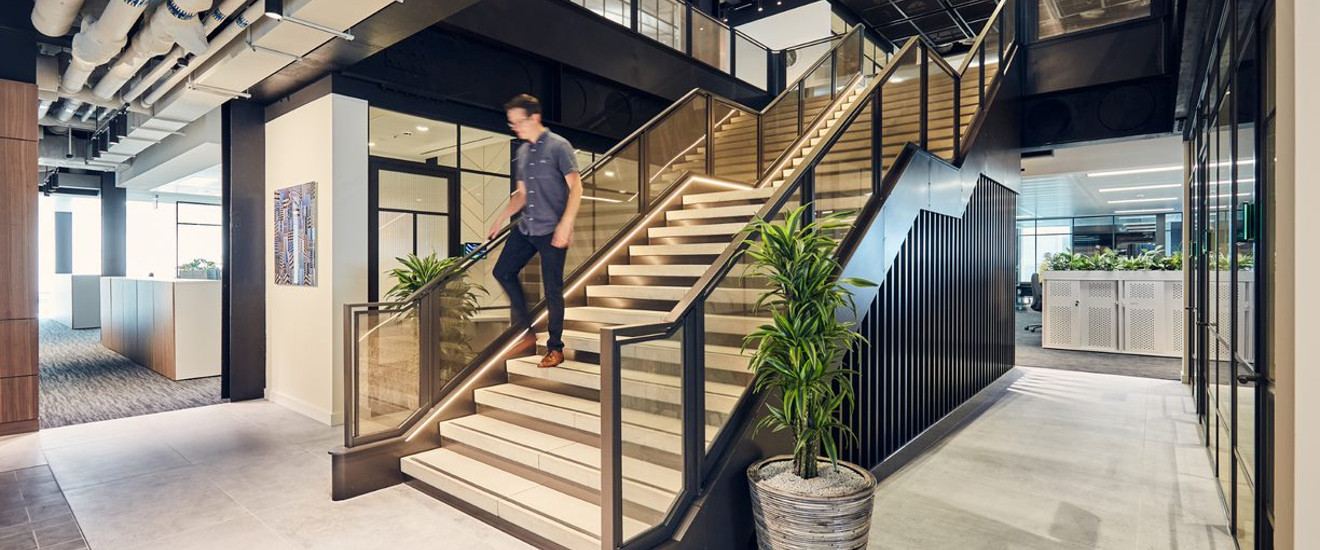How a well-designed office pays a return on investment
Kevin Wither, Head of Landlord, spoke with Global Banking and Business Review to discuss how a well planned and designed workplace can benefit business.


As seen on Global Banking and Finance Review
For many people, recent years have caused a big shift in their work lives, with offices replaced either in part or completely with working from home. The pandemic forced us all to rethink safe working practices, meaning that for some that bustling office environment still feels like a distant memory.
Many businesses have since embraced remote working. Now, flexible working patterns have unearthed a lot of benefits for employees. It means less time spent commuting and more free time at their disposal and with employees driving a demand for ongoing flexibility, you would be forgiven for assuming that the office as we knew it will remain a thing of the past.
In 2020, Peldon Rose commissioned a report to examine the Office of the Future. We spoke to a cross-section of the UK business community, from business owners and senior leadership staff to others in non-managerial roles. The results were fascinating and provided much food for thought about the role and lasting importance of a place-based environment, and still ring true today.
How important is an office space?
The real question here is: “How important is the right office space?”
What was extremely clear from our research was that people felt the office would become a place for the interactive side of working — socialising, collaborating on tasks, training or brainstorming. We also saw that many employees placed a high value on the learning and development opportunities that working alongside others provides.
For this, you need a suitable office space. The primary purpose of the office continues to evolve. It will no longer simply be the place to get your head down and get through your to-do list but will instead become a social and learning destination. This means that creating the right space has never been more important to help deliver a return on investment.
Even before the pandemic, we saw a demand for modern, open and agile working environments and practices. We predict this will be amplified even further, with the office becoming a key factor in attracting and retaining talent.
The physical and mental implications of working from home
While working from home has many advantages, it can have a marked impact on physical and mental wellbeing. One example of this is eye strain caused by increased screen time.
There is also the reduced access to proper equipment like chairs and desks to take into account. This has led many of us to improvise, meaning we’ve had to work from beds, sofas and even ironing boards, so the impact also extends to posture.
25 per cent of people we spoke to believed their wellbeing had been negatively impacted by working from home full time. While another 47 per cent of people couldn’t see the impact, only time will tell the true mental health implications of working remotely on a long-term basis.
An ONS analysis, conducted towards the end of May 2020, further supports the negative impact that constant isolation from our colleagues can have on our mental health. In fact, approximately 7.4 million people reported loneliness had affected their wellbeing, whilst working-age adults living alone were more likely to report loneliness both “often or always”. Furthermore, according to a study by the Mental Health Foundationn, 70 million workdays are lost each year in the UK due to mental health challenges, costing employers approximately £2.4 billion per year – and this could be set to increase. This only reinforces the fact that we need the workplace to act as one of life's communal hubs to support employees’ personal needs at all levels of a business.
The long-term view
Undoubtedly, over coming years, the trend towards flexible or remote working will help to broaden the talent pool. Without a long daily commute to factor in, candidates are more likely to apply for roles slightly further afield.
Although this benefits businesses by providing access to a greater number of applicants, it also means the competition for this talent will increase — businesses will have to work harder to impress. Office interior design will become a contributing factor in demonstrating what a business stands for, with 66 per cent of our respondents stating that a positive and shared vision, purpose and culture is important when deciding to work for or continue to work for a company.
Businesses can’t ignore the power of an office designed with purpose and strategy if they want to bring the best talent on board and help their teams work as effectively as possible. The physical office should provide a complete working experience for employees, bringing people together, supporting wellbeing and facilitating learning and career growth. Although there are many benefits to remote working, many have reported they have struggled to know when to switch off and find that all-important balance.
It’s clear to see the importance of the office when you start to examine the broader picture and consider the multitude of benefits it brings, from physical and mental wellbeing to productivity and an ability to learn and grow. While an extended period of working from home can cause challenges for employees at all levels, businesses can now begin to measure the ROI that a return to a good quality office and an adoption of flexible working can bring. Central to this is ensuring that the Office of the Future ticks all the boxes to support and nurture the workforce going forwards.
In the last few years, our team of workplace strategists and specialists have helped businesses to transform their workplaces to support new ways of working in a hybrid and increasingly flexible world. Take a look at the data-driven designs we’ve created for Totaljobs, Vitality and ECI Partners, or get in touch with the team today.
You may also like
Enhancing culture and collaboration for ECI Partners
Rebuilding connections with Totaljobs' new London office
Happy, healthy, and full of life: a workplace fit for Vitality
There's nothing like XTX Markets' London office

Start your workplace transformation today.
Your workplace holds enormous potential to improve your business performance. Get in touch today, and we will unlock that potential together.

